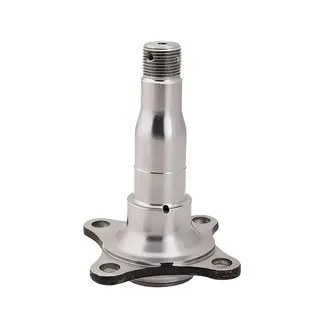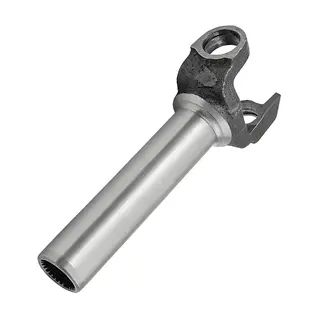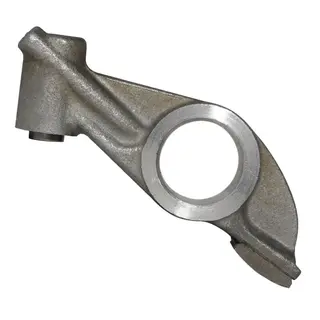In modern manufacturing, the performance of forgings directly affects the quality and service life of mechanical products. Heat treatment technology, as an important method to enhance the performance of forgings, plays an indispensable role. This article will explore in depth various heat treatment technologies for forgings, including annealing, normalizing, quenching, tempering, quench-tempering, solution treatment, and aging, helping readers gain a comprehensive understanding of the characteristics, applications, and advantages of these processes.
Annealing is a heat treatment process that reduces the hardness of metal and improves machinability through heating and slow cooling. According to different process requirements, annealing can be divided into various types, each with its unique application scenario.
Incomplete annealing is mainly used for hypoeutectoid steels. By heating the steel to a temperature between Ac1 and Ac3 (or Acm), holding for a short time, and then slowly cooling, a structure of spheroidized pearlite and spheroidized carbides is obtained. This process can effectively reduce hardness and improve machinability, particularly suitable for tool steels, bearing steels, and cold-work steels.
Full annealing involves heating hypoeutectoid steel to 30–50°C above Ac3, holding, and then slowly cooling to about 600°C before air cooling. This process can eliminate forging stress, reduce hardness, improve plasticity, and enhance machinability, while preparing the microstructure for subsequent heat treatment. For example, hypoeutectoid steels like 5CrMnMo often adopt this process.
Isothermal annealing is an efficient annealing process suitable for hypoeutectoid, eutectoid, and hypereutectoid steels. The steel is heated to 20–30°C above Ac3 (for hypoeutectoid steel) or between Ac1 and Acm (for hypereutectoid steel), held until fully austenitized, then rapidly cooled to a temperature below Ar1 and held isothermally until austenite fully transforms. Compared with full annealing, isothermal annealing can shorten annealing time, improve productivity, and obtain a more uniform structure.
Conventional spheroidizing annealing is mainly used for eutectoid or hypereutectoid steels. By heating to Ac1 + 20–30°C, holding, and then cooling to slightly below Ar1 to hold isothermally, carbides are spheroidized. This process can achieve good carbide spheroidization quality, reduce process time, and is widely applied to carbon steel and alloy steel tools, cold-work dies, and bearing components.
Isothermal spheroidizing annealing heats steel to Acm + 20–30°C, holds, then air cools to obtain fine lamellar pearlite, followed by spheroidizing annealing. This process is suitable for steels with coarse pearlite lamellae or severe networked carbides in the forging structure, such as T12 and bearing steels, and can effectively improve the spheroidization performance of the material.
Rapid spheroidizing annealing is a process that combines normalizing and spheroidizing. By first normalizing to refine the structure and then performing spheroidizing annealing, it is suitable for steels that are difficult to spheroidize. This process can improve spheroidization quality and production efficiency.
Normalizing is a heat treatment process in which steel is heated to 30–50°C above Ac3, held, and air cooled to obtain a pearlitic structure. The main purpose of normalizing is to refine the structure, eliminate stress, and improve machinability. According to different process requirements, normalizing can also be divided into conventional normalizing and two-step normalizing.
Conventional normalizing is suitable for hypoeutectoid, eutectoid, and hypereutectoid steels. By heating to Ac3 + 30–50°C, holding, and air cooling, the structure is refined, the Widmanstätten structure of medium carbon steel or networked carbides in hypereutectoid steel is eliminated, stress is reduced, and machinability is improved.
Two-step normalizing is a special normalizing process in which the workpiece is first rapidly cooled to about 550°C (below Ar1), then placed in a furnace or ash bed for slow cooling. This process can reduce deformation and eliminate abnormal structures, suitable for workpieces with complex shapes, large differences in cross-section, or steels prone to abnormal microstructures.
Quenching is a heat treatment process in which steel is heated to Ac3 + 30–50°C (hypoeutectoid steel) or between Ac1 and Acm (hypereutectoid steel), held, and then rapidly cooled at a rate above the critical cooling rate to obtain a martensitic structure. The main purpose of quenching is to improve the strength and hardness of steel. According to different application scenarios, quenching can be divided into conventional quenching and special quenching processes.
Conventional quenching heats steel to Ac3 + 30–50°C (hypoeutectoid steel) or between Ac1 and Acm (hypereutectoid steel), holds, and rapidly cools to obtain a martensitic structure. This process is widely used for various steel components, especially parts that require high hardness and high strength.
Hot forging quenching is the process in which forged parts (with the final forging temperature generally around 900°C) are immediately quenched in the quenching medium. This process combines hot forging and heat treatment, which can improve the strength, plasticity, and toughness of the forging, while simplifying the procedure, saving energy, and improving labor productivity. For example, hypoeutectoid steels such as 45 steel and 40Cr often adopt this process for hot-forged parts.
Tempering is a heat treatment process in which quenched or normalized workpieces are heated to a temperature below Ac1, held for a certain period, and then cooled to room temperature. The main purpose of tempering is to transform the unstable structure obtained by quenching into a more stable structure, appropriately reduce hardness and strength, improve plasticity and toughness, and reduce or eliminate residual stress.
High-temperature tempering heats steel to between 500–700°C, holds, and then air cools. This process can reduce hardness, increase plasticity, and reduce or eliminate internal stress. For example, medium carbon structural steels often undergo high-temperature tempering after quenching to obtain good comprehensive mechanical properties.
Quench-tempering is a heat treatment process in which medium carbon structural steels are normally quenched and then subjected to high-temperature tempering. The purpose is to obtain good comprehensive mechanical properties. Through quenching, hardness and strength are increased, and through high-temperature tempering, performance is adjusted so that the material maintains good plasticity and toughness while achieving high strength. This process is widely used in important mechanical components.
Solution treatment and aging are mainly used for stainless steel, heat-resistant steel, and age-hardenable alloys, improving material performance through specialized heat treatment processes.
Solution treatment involves heating age-hardenable alloys or stainless/heat-resistant steels to a certain high temperature (1000–1150°C for stainless/heat-resistant steels), dissolving all or most of the strengthening phase into the solid solution, adjusting grain size, and then rapidly cooling. This process can improve the uneven distribution of strengthening phases in the forging state, reduce hardness, increase plasticity, corrosion resistance, and conductivity, and prepare for subsequent aging treatment.
Aging treatment allows a supersaturated solid solution obtained from solution treatment to precipitate uniformly in the matrix at room temperature or over a certain period. This process stabilizes the microstructure, increases strength and hardness, and is widely applied to age-hardenable alloys and solution-treated stainless and heat-resistant steels.
In actual production, to save energy and improve production efficiency, the residual heat of forged parts is often used for heat treatment. These processes include residual heat normalizing, residual heat quenching, residual heat isothermal annealing, and high-temperature tempering.
Residual heat normalizing is the process of using the residual heat of forged parts after hot forging for normalizing. This process can reduce heating time, save energy, and obtain good structural performance.
Residual heat quenching involves directly quenching forged parts using their residual heat after hot forging. This process can improve production efficiency while obtaining high-strength and high-hardness structures.
Residual heat isothermal annealing uses the residual heat of forged parts after hot forging for isothermal annealing. This process can shorten annealing time, save energy, and obtain uniform structure and good machinability.
High-temperature tempering heats quenched or normalized workpieces to between 500–700°C, holds, and then air cools. This process reduces hardness, improves plasticity, and reduces or eliminates internal stress. It is widely applied to medium carbon structural steels and alloy steels.
Through the comprehensive analysis of forging heat treatment technology above, it can be seen that heat treatment processes play a crucial role in enhancing forging performance. Different heat treatment processes can be selected according to material characteristics and usage requirements to achieve the best performance. Whether it is annealing, normalizing, quenching, tempering, quench-tempering, solution treatment, or aging, each process has its unique application scenarios and advantages.
In summary, heat treatment technology is an indispensable part of modern manufacturing. Through precise temperature control and process design, it endows metallic materials with excellent performance to meet various complex application requirements. It is hoped that this article can help readers better understand and apply these heat treatment technologies, improving production efficiency and product quality.



